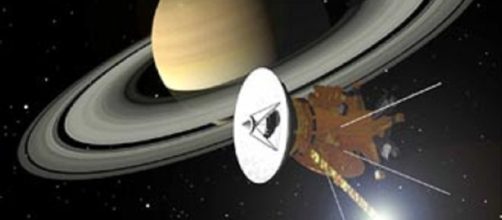The 20-year voyage of the Cassini space probe has come to an end as it executed a death dive into the atmosphere of Saturn. The mission, which included 13 years in orbit around the ringed planet, was one of the most spectacular and productive in the history of space exploration. Cassini discovered a wealth of information about Saturn, its rings, and its moons that will keep scientists busy for decades.
Cassini almost never got off the ground
One of the ironies about Cassini was that its beginning was accompanied by mass protests and a law suit by the Green Party.
At issue was the 73 pounds of Plutonium that the probe carried to power it's RTG units that provided energy for the mission. The protestors claimed that an accident at launch or during one of the gravity assist maneuvers would cause millions of people to be exposed to radiation. One of the leaders of the protests was a physicist named Michio Kaku, who subsequently became a fixture on the science channel as a talking head science expert. The objections were based on ignorance since the design of the plutonium power source assured that any mass exposure to radiation was vanishingly remote. Kaku doesn’t like to talk about his early opposition to Cassini these days.
Discoveries at Saturn beyond evaluation
The number and scope of discoveries that Cassini made in its 13 years in orbit around Saturn are beyond evaluation. It flew through the geysers erupting from cracks in the ice of Enceladus from the warm subsurface ocean on that moon. It mapped the liquid methane lakes and streams of Titan, as well as planting the Huygens probe on the surface of that moon. It observed storms on the poles of Saturn and looked at the rings from close up for the first time. Cassini returned spectacular images from the Saturn system that illustrates its exotic beauty.
Scientists look to the future
Cassini is now history, having destroyed itself in the atmosphere of Saturn to keep it from contaminating any of Saturn’s moons.
Now scientists are looking to the future of the exploration of Saturn and its moons. They are looking at landing a boat or a submarine or even a "dragonfly" on Titan to explore it liquid methane lakes. An orbiter or lander on Enceladus would delve into the secrets of that moon’s subsurface ocean and discover, hopefully, if it is an abode of life. One thing that Cassini proved was that there is glory in space exploration as well as illumination. The expansion of the frontiers of knowledge is an inherent good, something that makes us human.


